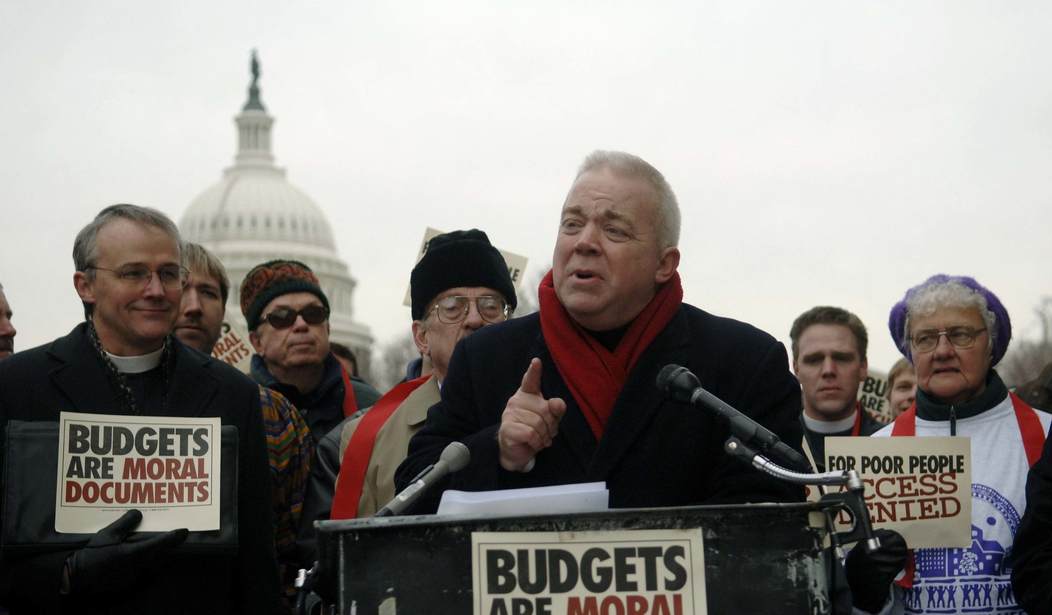On Sunday, The New York Times published a story about the religious Left on the front page, suggesting a resurgence of Christian liberals in politics. But buried deep in the report was a stunning admission: religious liberals are at loggerheads with “secular fundamentalists,” and the Democratic Party fears to promote religious voices in its ranks.
“Most progressive religious leaders I talk to, almost all of them, feel dissed by the left,” the Reverend Jim Wallis, founder and president of Sojourners, told the Times. “The left is really controlled by a lot of secular fundamentalists.”
Yes, The New York Times printed a quote describing liberals as “secular fundamentalists.” This statement did not even come from a conservative, but from a liberal evangelical Christian who has been active on the Left since 1971.
Wallis argued that “one party has strategically used and abused religion, while the other has had a habitually allergic and negative response to religion per se” (emphasis added).
That a long-time liberal like Wallis described the Republican Party as “strategically using and abusing religion” should come as no surprise — the real bombshell is his attack on the Democrats.
The Times reporter, Laurie Goodstein, tacitly admitted a growing gulf between religious liberals and secular progressives.
“As Republicans cemented the Christian right as a cornerstone of the party’s base, Democrats moved in the opposite direction, so intent on separating church and state that they recoiled from courting religious blocs of voters,” Goodstein reported, summarizing remarks from a former Democratic senator and presidential candidate, Gary Hart.
During his 1988 presidential campaign, Hart recalled being asked, “Why don’t you talk about your religious background more?” His answer? “I don’t want to be seen as pandering for votes.”
Goodstein noted that “political appeals based on religious beliefs continue to carry risk for Democrats, given the growing numbers of Americans who claim no religion: Secular voters overwhelmingly vote Democratic, and younger voters are far more secular than older voters.”
This side remark was actually a huge admission of the fundamental problems facing any attempt at a religious Left.
“The movement never does arrive,” lamented the Reverend Daniel Schultz, pastor at a United Church of Christ congregation in Wisconsin.”It never arrives because the left (or at least the Democratic Party) is too diverse and its priorities too different for anything like a mirror image of the religious right to coalesce.”
The clash of priorities has clearly emerged on the issue of abortion. In April, Democratic National Committee Chairman Tom Perez said abortion is “not negotiable,” reversing his endorsement of a Democratic mayoral candidate in Nebraska whom NARAL Pro-Choice America attacked as “anti-choice.”
“Every Democrat, like every American, should support a woman’s right to make her own choices about her body and her health,” Perez declared. “That is not negotiable and should not change city by city or state by state.”
Opposition to abortion traces back to the very beginning of Christianity, and while some Christians have supported legalizing the practice, majorities of Democrats and even minorities who tend to vote Democratic support large restrictions on abortion. This line-in-the-sand approach has divided Democrats, and helps to highlight the underlying rift between religious and secular progressives.
Perhaps this uncompromising support for abortion is one of the defining features of the “secular fundamentalists” to whom Wallis referred.
Despite this underlying tension, and the unlikelihood of a religious Left ever fully picking up traction, the Times‘s Goodstein seemed to predict a resurgence. Al Mohler, president of Southern Baptist Theological Seminary, argued that this was a desperate cry for “assistance in any form it can be found.”
“If that assistance can come from the religious left, then so be it,” Mohler explained. “But there’s also the very clear sense that the secular left would have to hold its nose in order to allow religious leaders and religious arguments into the liberal tent.”
“As the New York Times story concedes, this announcement of a resurgent political religious left has been made over an over again, but that movement tends to disappear almost as quickly as it has been announced,” Mohler noted.
He emphasized that chilling Wallis quote that captures the heart of the religious right — “the left is really controlled by a lot of secular fundamentalists.”
Flashes in the culture wars — like the battle over abortion, the LGBT movement, and the desire to silence religious expression in the public square — reveal a fundamental worldview conflict between the secular and religious which cannot be bridged by a religious acceptance of the tenets of the Democratic Party.
Goodstein explained the mindset of religious progressives: “Frustrated by Christian conservatives’ focus on reversing liberal success in legalizing abortion and same-sex marriage, those on the religious left want to turn instead to what they see as truly fundamental biblical imperatives — caring for the poor, welcoming strangers and protecting the earth — and maybe even change some minds about what it means to be a believer.”
Religious liberals cede the culture issues, but attempt to bolster the Democratic platform on welfare, immigration, and climate change using religion. Even though they support the same ends as “secular fundamentalists,” their arguments for those policies cannot be reconciled with a secular worldview.
Therefore, members of the religious Left remain second-class citizens in the progressive movement. They can be welcomed as soldiers, but not followed as leaders. The secular aspect of the Democratic Party has won out, and that won’t be changing any time soon.









Join the conversation as a VIP Member